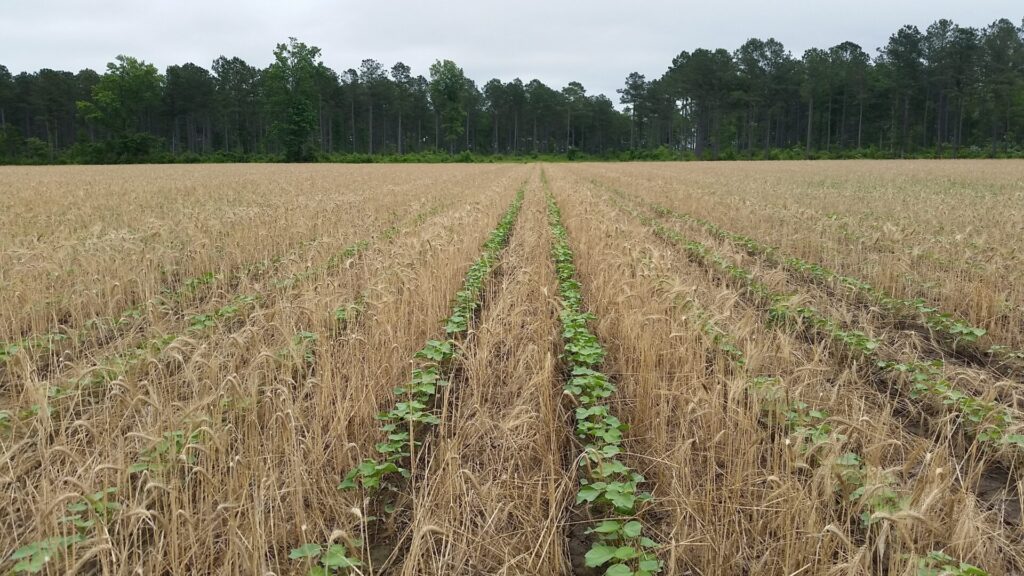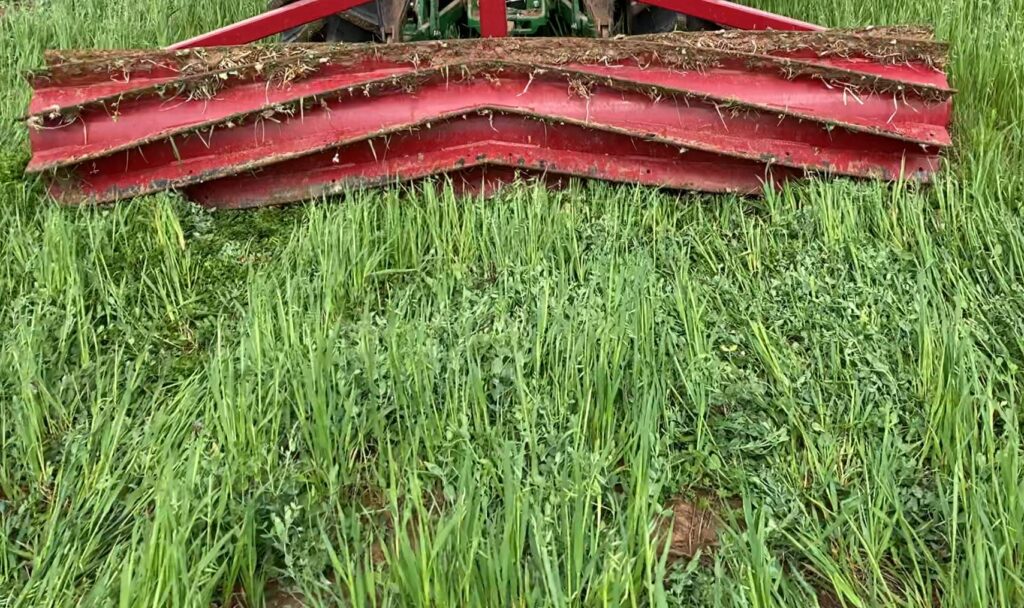The use of cover crops in soil health management systems is growing in popularity due to their numerous benefits. Not only do cover crops help maintain soil integrity and improve environmental health, but they also offer an additional advantage: weed suppression. This is especially crucial for cotton, which is a slow-growing crop and particularly vulnerable to early-season weed competition.
To help effectively integrate cover crops into your system as a weed suppression tool, the Soil Health Institute, Texas A&M AgriLife Research, and Rodale Institute have developed two fact sheets. The first describes how cover crops can help cotton farmers control weeds and how cover crops can work in organic systems. The second compares cover crop species in the U.S. Cotton Belt and includes insights from farmers who have successfully applied these methods.
“Cover crops can be a powerful tool for cotton farmers, not only for enhancing soil health, but also for combating weed pressure. By understanding the specific benefits and applications of different cover crop species, farmers can make informed decisions that lead to healthier soils and more resilient cotton crops.”
– Jessica Kelton, Fact Sheet Author and SHI Soil Health Educator

What are the benefits of cover crops, especially for weed suppression?
Cover crops, a component of soil health management systems, are a well-known weed suppression tool that can improve soil and provide other environmental benefits. They are also a key practice in regenerative agriculture, which focuses on restoring and maintaining soil and ecosystem health. Cover crops can assist with long-term sustainability goals and improve farm profitability. Long-term use of cover crops benefits cotton farmers and the environment through increased drought resilience, nutrient cycling, soil organic carbon; improved erosion control, water infiltration, habitat for soil life; and reduced herbicide resistance and weed densities.
Cover crops have a high potential for reducing weed densities over diverse soil and climatic conditions in both conventional and certified organic cotton production. There is a general agreement that using a combination of cover crops and other weed suppression tools, such as herbicides or tillage, will have more positive results for controlling weeds in cotton systems compared to either strategy alone. Cover crops are also valuable in managing herbicide-resistant weeds. Moreover, they contribute to crop rotation and diversity, which are needed in cotton systems. While well-studied cover crops like cereal rye, wheat, and vetch have proven effective for weed suppression in cotton, less common species such as lupine, turnips, and triticale, as well as mixed cover crops, are underrepresented in current literature. These fact sheets aim to be a valuable resource for cotton farmers considering cover crops for both weed suppression and soil health benefits.
What are some considerations when using cover crops for weed suppression?
Species selection and seeding rate
- Choice of cover crop species and seeding rates can be highly variable from region to region. Depending on climatic conditions, certain species may be more suited for one region than another.
Planting date
- Planting the cover crop early can improve the likelihood of good cover crop establishment. If planting after cash crop harvest, the sooner the cover crop is planted, the better. Planting cover crops early provides good establishment for winter survival and spring growth.
Termination method and timing
- There are several different methods for terminating cover crops, including chemical, frost, mowing, crimping, and tillage.
- Choosing when to terminate cover crops involves tradeoffs. Later termination allows more time for biomass production, which makes weed suppression more efficient. At the same time, providing enough time to ensure complete termination before cotton planting is important to avoid any negative effects on cotton establishment. Though no simple formula exists, considering these factors can aid in decision-making and success stories.
Other considerations
- It is wise to start with a few acres that are easily managed and seek advice from local practitioners or advisors who have been successful at using cover crops.
- It is important for farmers to keep in mind that each cover crop has specific management requirements, provides unique benefits, and can have limitations that need to be considered prior to planting.

“You’ve got to have a lot of biomass for weed suppression. Don’t be afraid of the biomass, but make sure you have the right equipment to work with it. Make sure to spray your cover crops at least two weeks ahead of planting. You also need to have a roller on the strip-till and a sweeper on the planter.”
– Myron Johnson, Cotton Farmer and SHI Farmer Mentor
With a wide variety of cover crop choices and management systems, reaping the multiple benefits of cover crops takes practice and active management. When you decide to implement cover crops into your practices, be sure to evaluate your soil and its needs, plan your cover crop rotation and timing of it, monitor weed growth, and adjust your cover crop strategy if necessary. If you have any questions after reading the fact sheets, reach out to our USRCF Soil Health Educators, Technical Specialists, and Farmer Mentors that are located in various USRCF states.
More details are provided in the following fact sheets:
The Soil Health Institute acknowledges the Hearst Foundations whose charitable contributions made these fact sheets possible, as well as additional supporters of the U.S. Regenerative Cotton Fund and USDA Partnerships for Climate-Smart Commodities (NR233A750004G040). Any opinions, findings, conclusions, or recommendations expressed in these publications are those of the author(s) and do not necessarily reflect the views of the U.S. Department of Agriculture. In addition, any reference to specific brands or types of products or services does not constitute or imply an endorsement by the U.S. Department of Agriculture for those products or services. USDA is an equal opportunity provider, employer, and lender. We also thank Texas A&M AgriLife researchers and Rodale Institute for their support in the literature review, analysis, and writing.